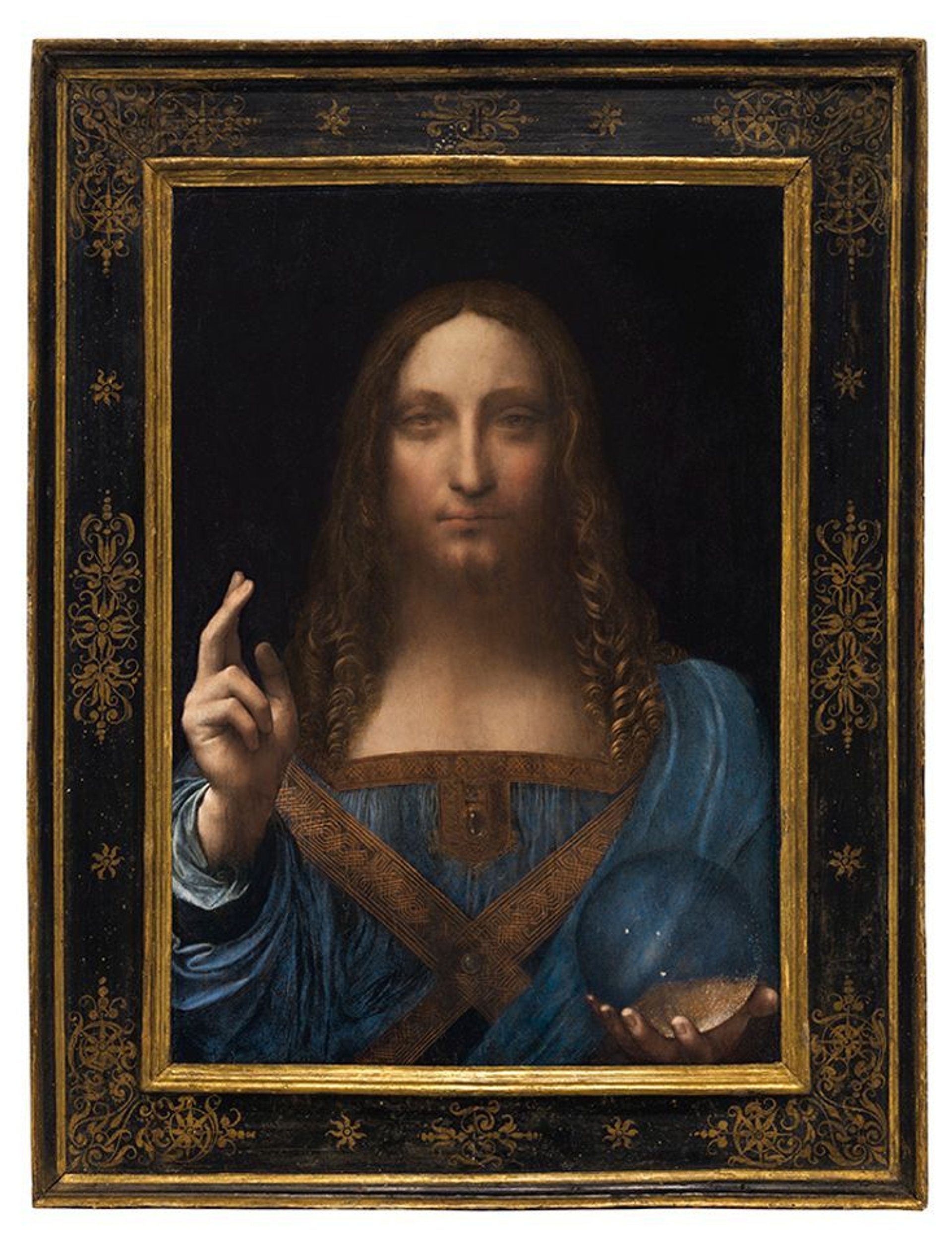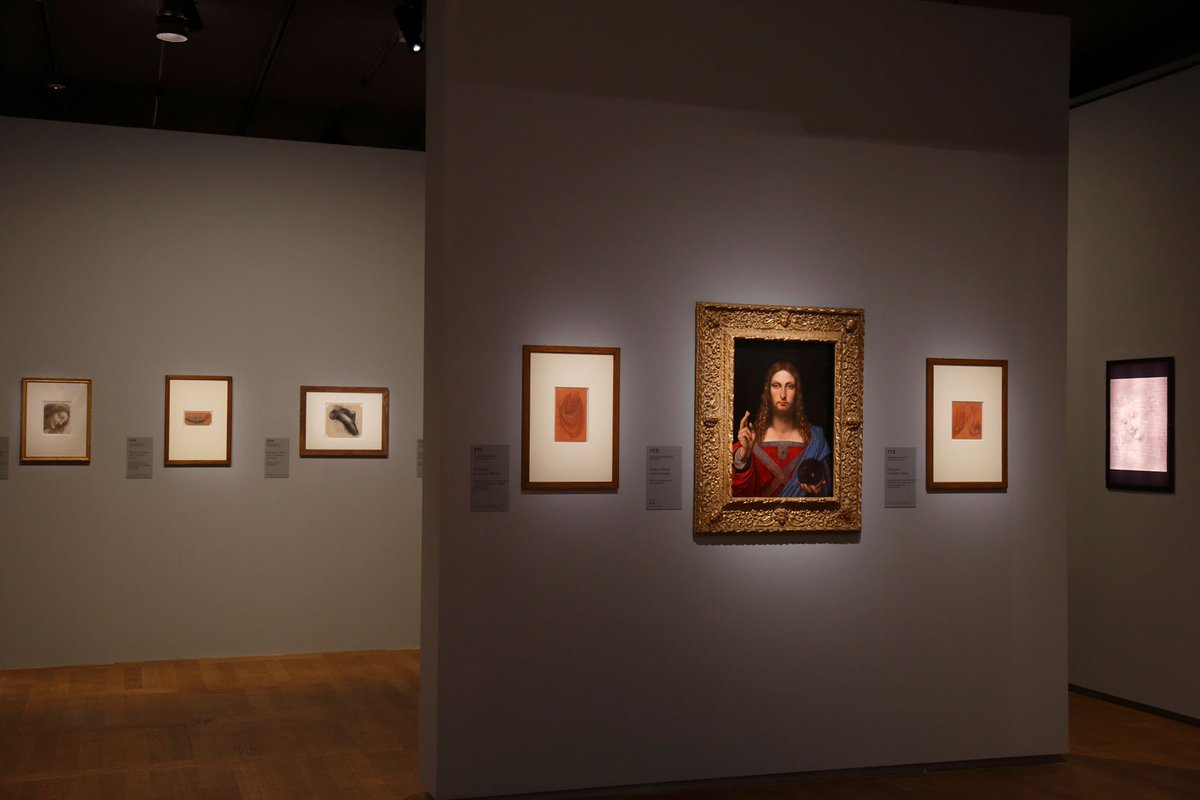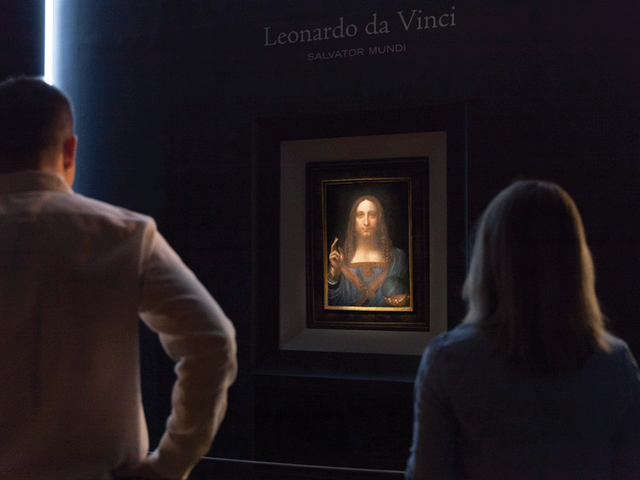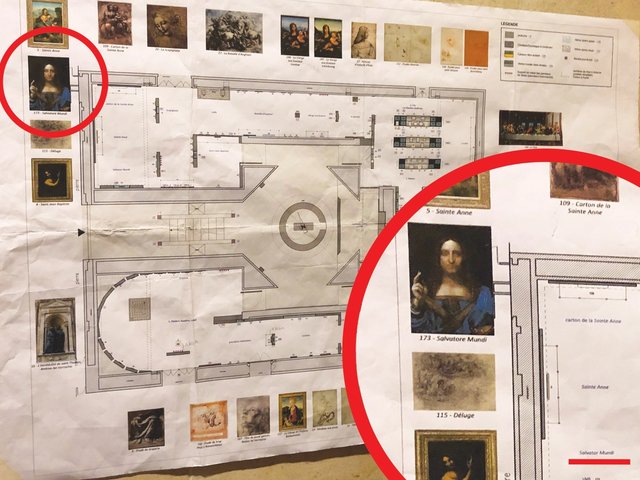The $450m Salvator Mundi was not included in the Louvre’s blockbuster exhibition on the press preview days—or at the exhibition’s inauguration presided over by the French culture minister Franck Reister on 19 October—but scrutiny of the catalogue reveals that the missing picture must have been close to making it on to the gallery walls.
A missing catalogue entry occurs between Cat 156—one of the Windsor studies for the Salvator Mundi—and Cat 158, the Ganay version of the subject. A Louvre official tells The Art Newspaper that two versions of the catalogue were produced as negotiations for the painting’s inclusion continued: one to be used if the picture arrived in time, the other if it did not.
So what has caused the late omission or the delay? Is it bureaucratic logistics, or is it more to do with the state of cultural diplomatic relations between France and the Saudi kingdom, whose Ministry of Culture is rumoured to be the current owner of the painting. It looks as if the logistics were in place for the picture to travel to Paris, but something occurred between 27 September and the advance exhibition preview on 18 October to make the picture’s timely arrival less likely.
The Art Newspaper has learned that on 18 October, while the advance preview of the Leonardo show was underway at the Louvre, a legislative amendment was made to the French government’s decree of 27 September indemnifying the loans to the exhibition. The “order” of amendment anticipates the possible loan of Salvator Mundi, from 20 October to 31 December 2019 inclusive. This suggests that the Louvre is open to displaying the Salvator Mundi even if it arrives halfway through the exhibition’s run (it closes on 24 February 2020).

Fashionably late: the $450m Salvator Mundi is keeping the Louvre waiting
The amendment guarantees €800m for transport of works and also for the length of their stay on site at the Louvre during those dates, but this threshold is lowered to €450m for the period from 1 January to 31 March 2020 inclusive “if the loan of the Salvator Mundi, attributed to Leonardo da Vinci, is confirmed before the 1st of January 2020 inclusive”. The amount is reduced further, to €275m, “if this loan is not confirmed”.
Another legislative document reveals that negotiations for the loan of Salvator Mundi have been continuing for more than a year. In June 2018, the French government issued a decree of immunity from seizure for the painting during a proposed loan period lasting up to 3 March 2020. The owner listed in the legislative document at that time is the Department of Culture and Tourism, United Arab Emirates (UAE).
Leonardo or attributed to Leonardo?
The October 2018 “order” also reveals that the museum is describing the $450m Salvator Mundi as “attributed to” Leonardo rather than as a definitive autograph work. The term “attributed to” usually refers to an attribution made by a knowledgeable expert, but suggests that the attribution has not been confirmed by a scholarly consensus.
Meanwhile, ten days before the Leonardo exhibition’s advance preview, the AlUla: Wonder of Arabia show was opened in Paris by the Saudi Culture Minister Prince Badr bin Abdullah bin Mohammed bin Farhan al-Saud and the French Culture Minister, Franck Reister, at the Institut du Monde Arabe (Institute of the Arab World). This is the same Prince Badr who was identified by the New York Times in December 2017 as the purchaser of the Salvator Mundi in the November Christie’s sale of that year; the Wall Street Journal then claimed that Badr, a lesser-known member of the Saudi royal family, had been acting as an intermediary for Crown Prince Mohammad bin Salman. On 8 December 2017 it was announced that the picture had been bought on behalf of the Louvre Abu Dhabi. The Saudi Embassy in Washington, DC issued the following statement:
“Due to the media reporting on the da Vinci Salvator Mundi purchase, the Embassy of the Kingdom of Saudi Arabia in Washington, DC, inquired from his Highness Prince Badr Al Saud’s office on the details related to the art piece’s purchase. Upon reaching out, the Embassy learned through information conveyed by His Highness’s office that the art work was acquired by the Abu Dhabi Department of Culture and Tourism for display at the Louvre Abu Dhabi in the United Arab Emirates and that HH Prince Badr, as a friendly supporter of the Louvre Abu Dhabi, attended its opening ceremony on November 8th and was subsequently asked by the Abu Dhabi Department of Culture and Tourism to act as an intermediary purchaser for the piece.”
An exhibition date for the Salvator Mundi of 18 September 2018 exhibit was subsequently announced by the UAE museum, but the picture mysteriously never appeared. Now, it seems, the Louvre Paris is being made to play a similar waiting game.




